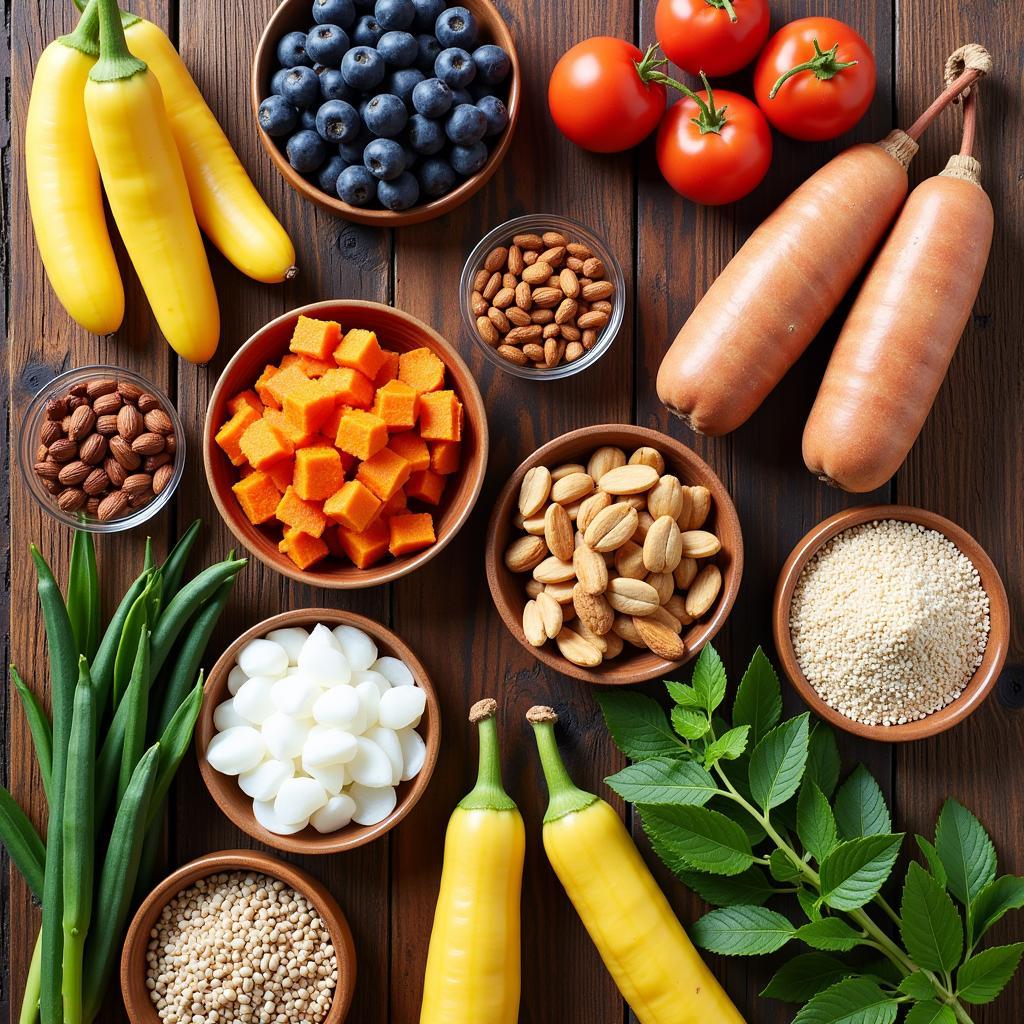When disaster strikes, having access to a reliable food supply can be the difference between weathering the storm and facing dire circumstances. But what if you’re committed to a healthy, organic lifestyle? Thankfully, your commitment to clean eating doesn’t have to be compromised in times of crisis. Building the Best Organic Emergency Food Supply is an achievable goal, ensuring you and your loved ones can stay nourished and safe without sacrificing your values.
 Essential organic food items for emergency preparedness
Essential organic food items for emergency preparedness
Why Choose Organic Emergency Food?
Opting for organic emergency food isn’t just about maintaining your dietary preferences during challenging times; it’s about prioritizing your health and well-being when it matters most. Here’s why organic emergency food should be at the top of your preparedness list:
- Free from Harmful Chemicals: Organic foods are grown without the use of synthetic pesticides, herbicides, and fertilizers, minimizing your exposure to potentially harmful substances when other resources might be compromised.
- Higher Nutritional Value: Studies have shown that organic foods often contain higher levels of essential vitamins, minerals, and antioxidants, providing your body with crucial nutrients during stressful situations.
- Supporting Sustainable Practices: Choosing organic supports environmentally friendly farming methods that conserve water, promote biodiversity, and reduce soil erosion, contributing to a more resilient food system.
Building Your Best Organic Emergency Food Supply: A Step-by-Step Guide
Creating a well-stocked organic emergency food supply doesn’t have to be overwhelming. By following these simple steps, you can ensure you’re prepared for any eventuality:
- Assess Your Needs: Consider the number of people you need to feed and the duration you want your supplies to last. A good starting point is to aim for a two-week supply per person.
- Prioritize Shelf-Stable Essentials: Stock up on shelf-stable organic staples such as:
- Grains: Brown rice, quinoa, oats, pasta
- Beans: Lentils, black beans, chickpeas
- Canned Goods: Fruits, vegetables, soups, beans, fish
- Nuts and Seeds: Almonds, walnuts, chia seeds, flax seeds
- Dried Fruits: Raisins, cranberries, apricots
- Nut Butters: Peanut butter, almond butter
- Oils: Olive oil, coconut oil
- Spices and Herbs: Salt, pepper, garlic powder, oregano
- Don’t Forget Water and Other Essentials: Include a gallon of water per person per day, a first-aid kit, sanitation supplies, and a manual can opener in your emergency kit.
- Rotate Your Stock Regularly: To ensure freshness, rotate your organic emergency food supply every six to twelve months, consuming older items as part of your regular meals and replenishing with new ones.
Choosing the Right Organic Emergency Food Kits
While building your own organic emergency food supply allows for customization, pre-made organic emergency food kits offer a convenient and often cost-effective alternative. When selecting a kit, consider the following factors:
- Certifications: Look for kits that contain USDA-certified organic products to ensure quality and authenticity.
- Variety and Taste: Opt for kits that offer a diverse range of food options to prevent taste fatigue and ensure nutritional balance.
- Packaging: Choose kits with durable, waterproof packaging to protect your food supply from moisture, pests, and damage.
“When selecting an organic emergency food kit, it’s crucial to prioritize quality and nutritional value over sheer calorie count,” advises Sarah Jones, a certified nutritionist specializing in disaster preparedness. “Look for kits that provide a balanced mix of macronutrients, including protein, carbohydrates, and healthy fats, to support both physical and mental well-being during emergencies.”
Staying Safe and Nourished: Your Organic Emergency Food Plan
Having an organic emergency food supply is essential, but equally important is knowing how to utilize it effectively. Consider these tips for maximizing the lifespan of your supplies:
- Prioritize Perishable Items: In the event of an emergency, consume any perishable food items in your refrigerator and pantry first before moving on to shelf-stable options.
- Ration Wisely: Establish a clear rationing system to make your food supply last as long as possible. Consider factors such as age, activity level, and health conditions when determining individual portions.
- Stay Hydrated: Water is crucial for survival. Ration your water supply carefully and explore alternative sources of safe drinking water if necessary.
Conclusion
Building the best organic emergency food supply is an investment in your and your family’s well-being during uncertain times. By choosing organic, you’re not only prioritizing your health but also supporting a more sustainable and resilient food system. Remember, being prepared is not about living in fear but about facing the unexpected with confidence and resilience.
Need help creating your perfect organic emergency food plan? Contact Mina Cones Food at 02437655121, email us at minacones@gmail.com, or visit our store at 3PGH+8R9, ĐT70A, thôn Trung, Bắc Từ Liêm, Hà Nội, Việt Nam. Our team of experts is available 24/7 to assist you.